Product-led Growth Playbook
Hello, from one PLG person to another! We created this playbook based on our experience and research as a team of makers with invaluable contributions from product-led growth professionals and SaaS founders. In this eBook, you will find the essentials of a successful PLG strategy.
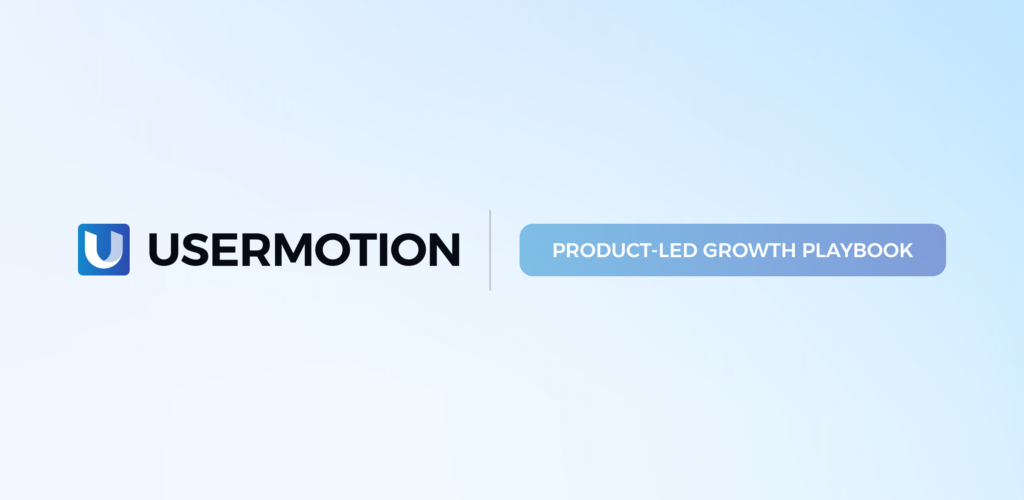
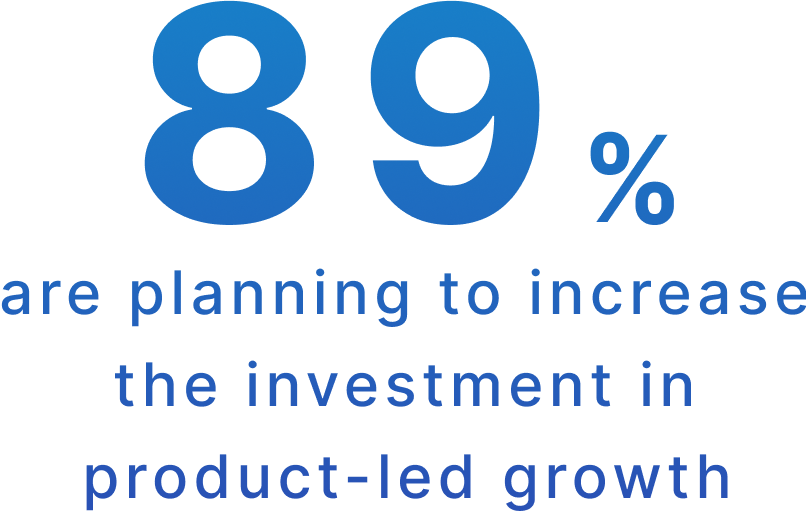
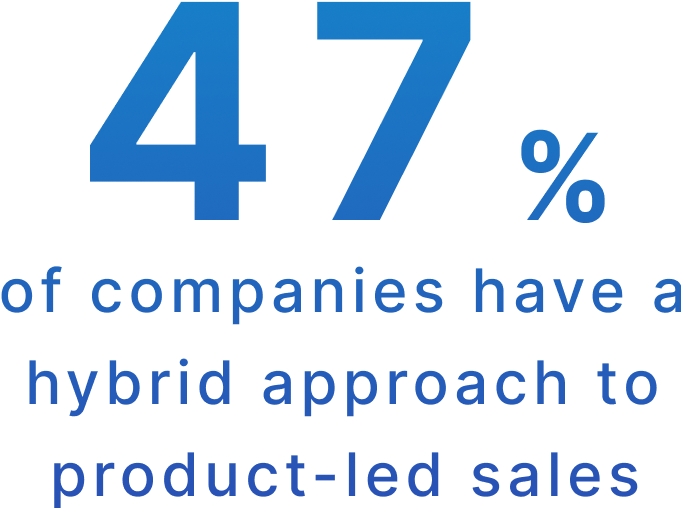
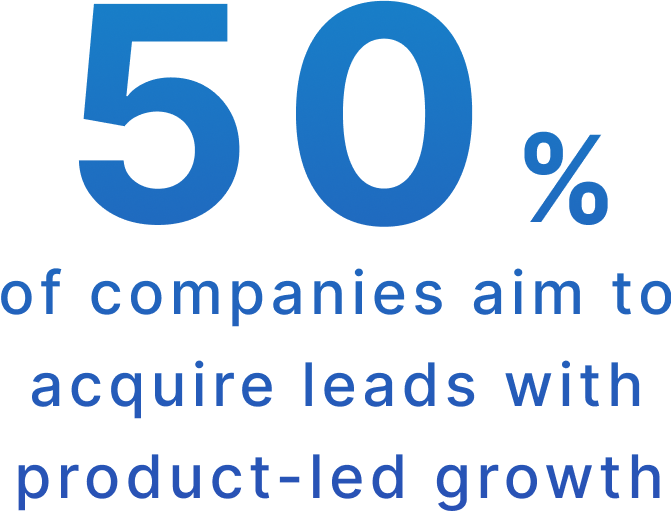
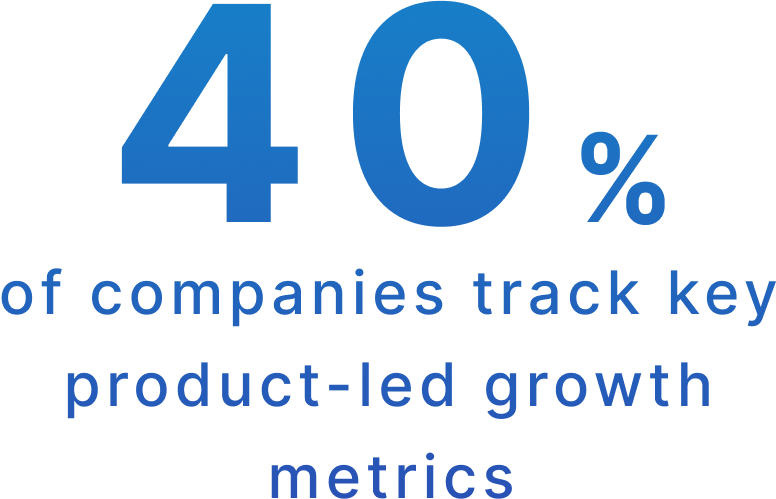
Table of Contents
I. Introduction
Introduction by Amirali Nurmagomedov
What is Product-led Growth?
Market Overview and Key Stats by Zeynep Avan
II. Understanding Product-Led Growth
The History and Evolution of PLG
Product-led Growth vs. Sales-led Growth
Examples of Successful PLG Companies
III. Pre-Growth: Building a Strong Foundation for PLG
Product Engineering
Product Development is Lean and Agile
PLG Framework: Acquisition, Activation, Retention, Referral, and Revenue
Crafting the Perfect Pricing Page for PLG by John Kotowski
IV. During-Growth: Driving Engagement through PLG
Go-to-market
PQLs
Minimal Barriers
Importance of User Onboarding by Selman Gokce
Voice of the Customer
V. After-Growth: Retaining growth through PLG
Analytics
Product Data
VI. Implementing Product-Led Growth
The Steps Businesses Can Take to Implement PLG
Potential Obstacles While Implementing PLG
VII. Future of Product-led Growth
Trends in Product-led Growth by Luka Kankaras
Final Words: Future Predictions
What is Product-led Growth?
Product-led growth is an all-in growth strategy that uses the product as the main system of acquiring, activating, and retaining customers. It plays an active role in every stage and leads the whole company for growing a business. Read more
PLG companies typically have a few key characteristics in common
They offer a free or low-cost product that is easy to try, often with a self-serve onboarding process that requires little to no interaction with a salesperson. They also focus on providing a great user experience and rely on customer feedback and data to drive product development and iteration.
Many companies are still not aware of the whole concept and what it serves to
So, you might hear that they are product-led companies, even if they only offer a free trial or freemium model and think that this is enough. On the contrary, for achieving success through product-led growth, companies should go all-in by creating a product that engages with the end user at every stage and sales and marketing teams that contribute to it with data-driven strategies.
PLG motion is not a shift from a sales-driven growth to a product-driven one
PLG motion is often seen as a shift from a sales-driven growth approach to a product-driven one, but it’s not limited to the growth team. It should be applied across all stages and departments of a product, including marketing, sales, customer success, and product teams. Each team contributes to it, not just focusing on their direct responsibilities.
Product-qualified leads should be at the center of your product-led growth strategy
Product-qualified leads refer to potential users who have a buying intent for a particular SaaS product. So how can we identify users who have an intent to buy? All in all, these are very valuable insights. The behavior of the users in the product, the traces they leave behind, and the important data we will follow show us which of these potential users have a tendency to buy or not. Because PQLs categorize customers based on their interactions with the product, they make more sense for companies adopting a product-focused growth strategy.
PLG is now a concept that runs many successful businesses
The secret behind the PLG is really simple, give users a chance to see what is your product and how it can be aligned with their business strategy. You may simply think that my product is enough yet hear the voice of your users. Business approaches are evolving and PLG is a way to change things, increase revenue and create a sustainable growth while developing your user base, your product and your revenue.
PLG Market Overview and Key Stats
The rise of PLG has been driven by several factors, including the growth of the software-as-a-service (SaaS) industry, the increasing importance of user experience in product development, and the proliferation of free and low-cost tools that make it easier than ever for companies to adopt a PLG approach. Read more
Product-led Growth Playbook
We asked SaaS companies about their thoughts on product-led growth
The research included 150+ respondents from mid-sized and large companies.
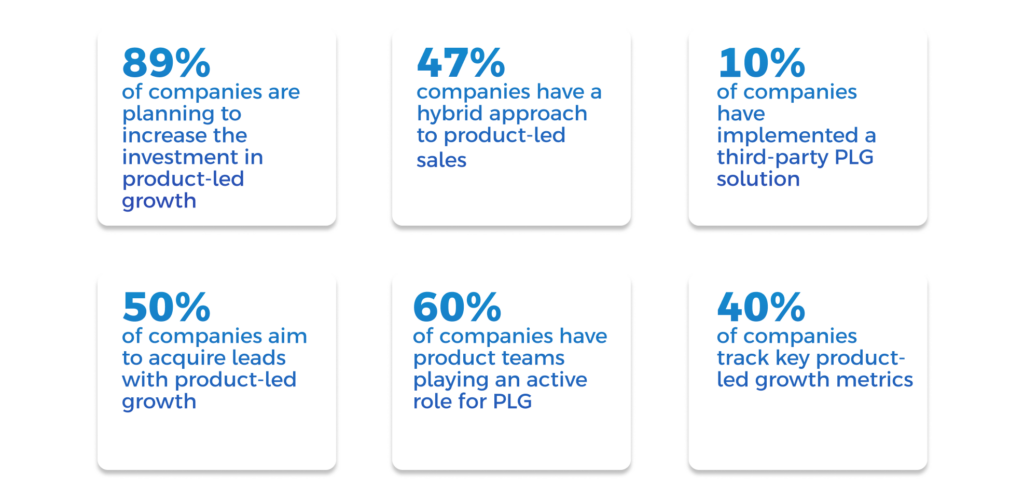
We asked these companies how they define product-led growth.
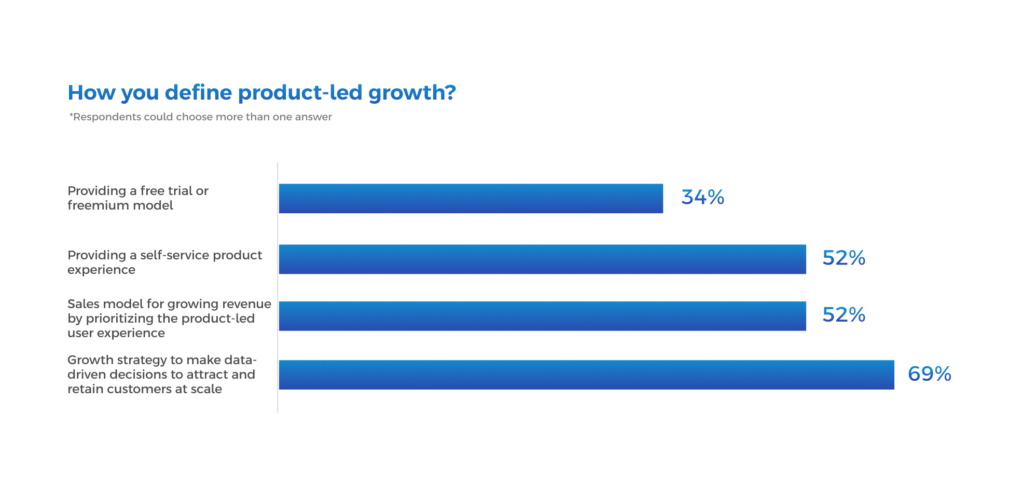
We also asked them if they have deployed a product-led growth motion in their company.
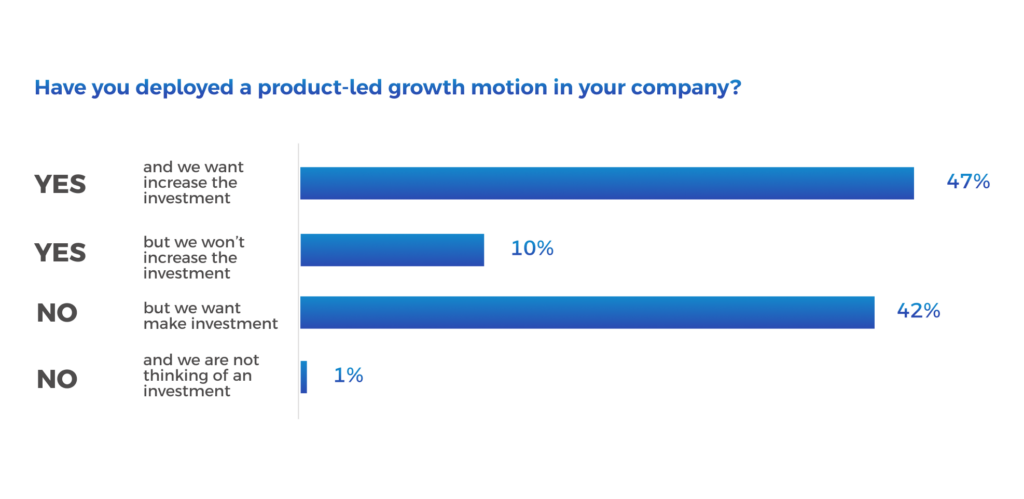
For those who have deployed a product-led motion, we asked “Why?” to understand their motivation.
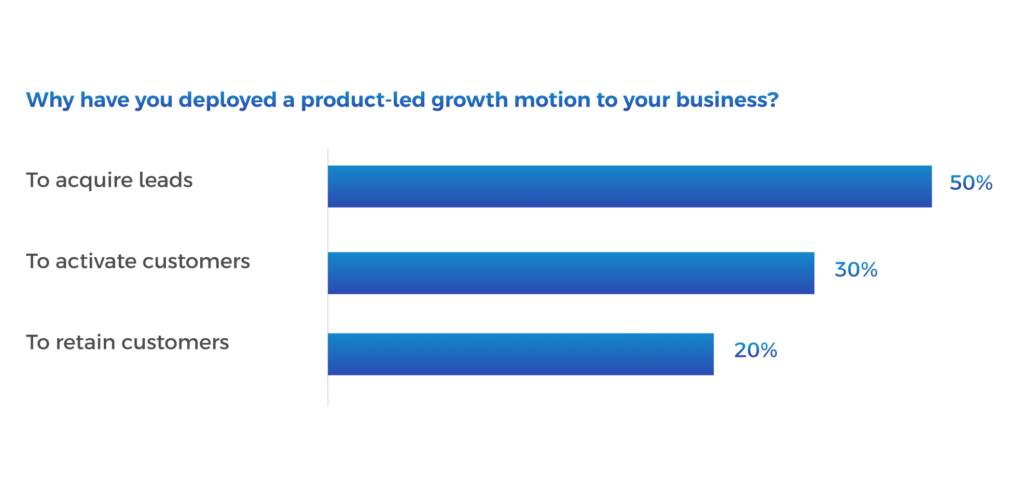
For those who haven’t deployed a product-led motion, we asked “Why?” to understand different reasons.
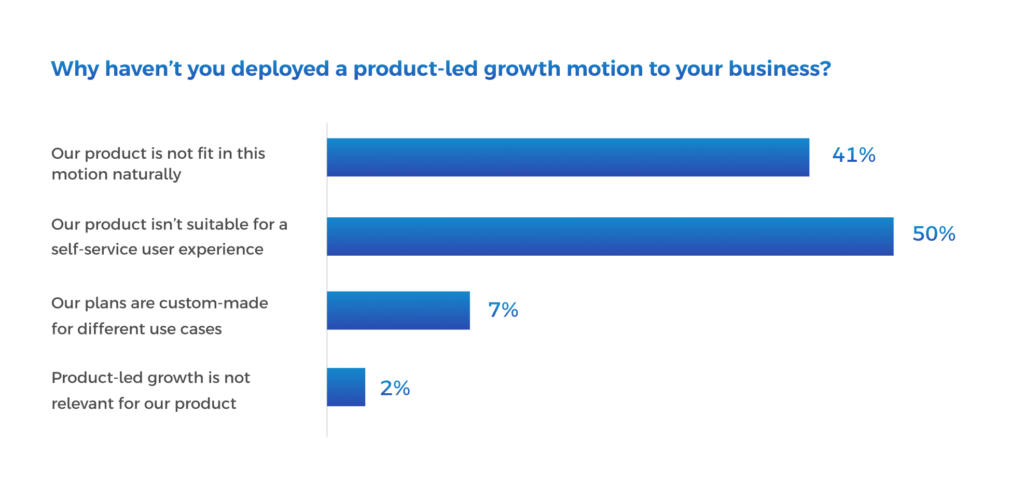
Product-led Growth Playbook
We asked companies how much of their revenues came from which motions and averaged their revenues divided between 3 growth motions. This shows that companies still rely on direct sales activities more than others, and marketing-led and product-led revenue percentages are in the race.
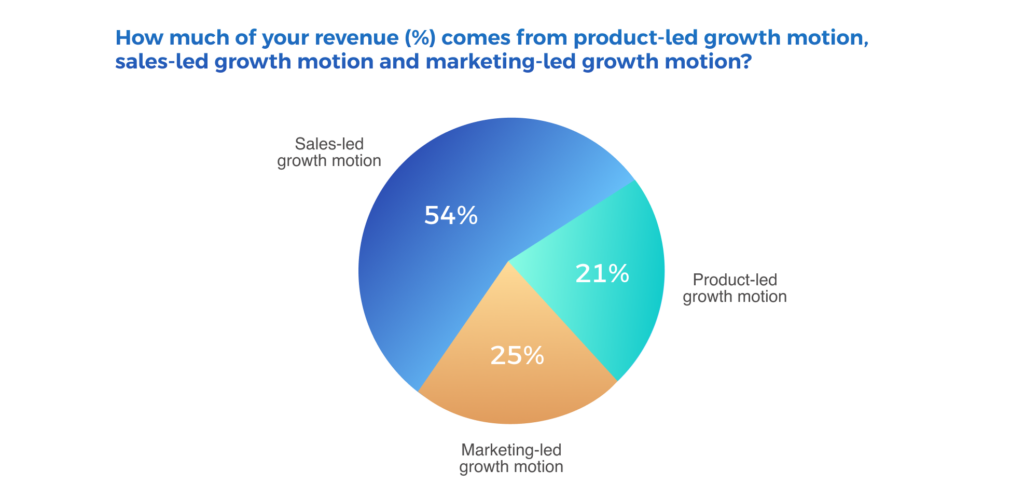
For PLG companies, there are several general and key metrics to be tracked, and the statistics show that only around 50% of them are tracking the most important metrics, like activation rate and product usage, to perform this model in the best way.
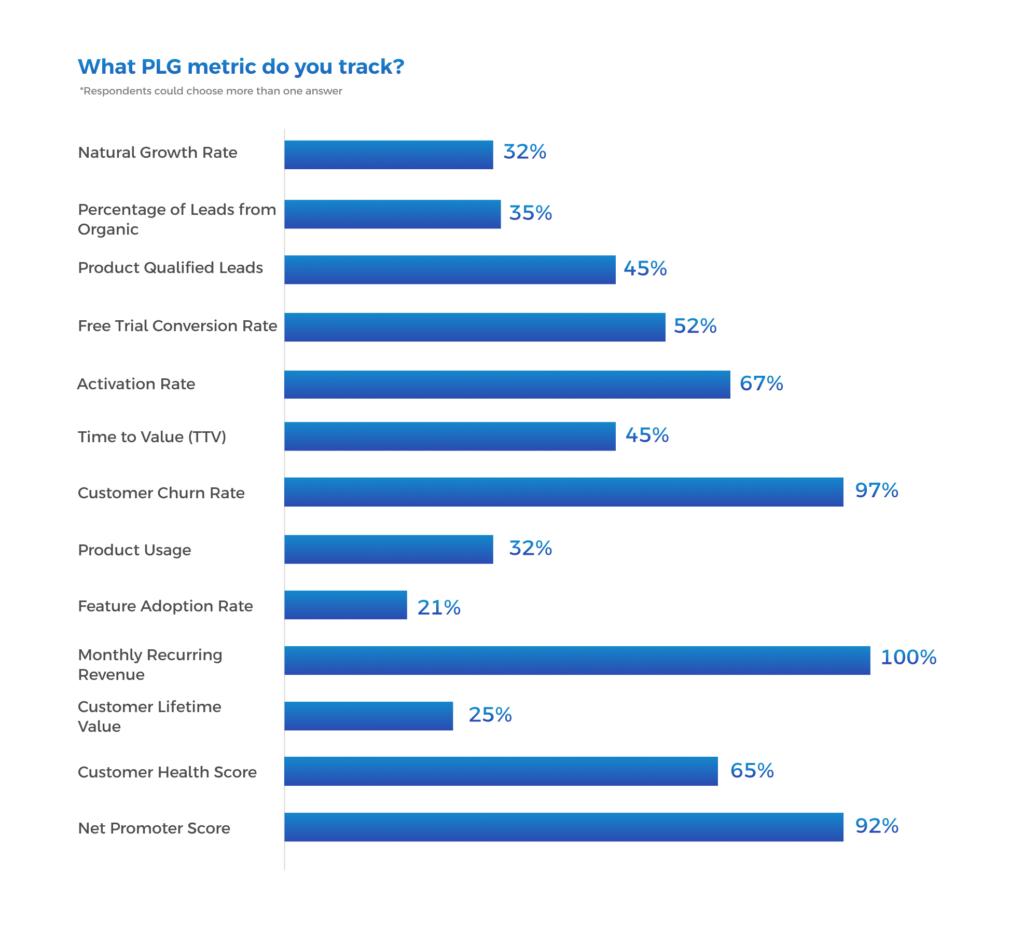
Product-led Growth vs. Sales-led Growth
Selling products has come a long way and the methods of selling products have evolved. In the good old days, sales-led growth was the norm and the only method. But now, product-led growth stands out for the advantages it brings with it.

Users can click on the name in the notification to access detailed profiles.
Building a Product-led Growth Framework
Building a product-led growth framework is an essential step in developing a successful product-led growth strategy. The framework is built around five key elements: acquisition, activation, retention, referral, and revenue.
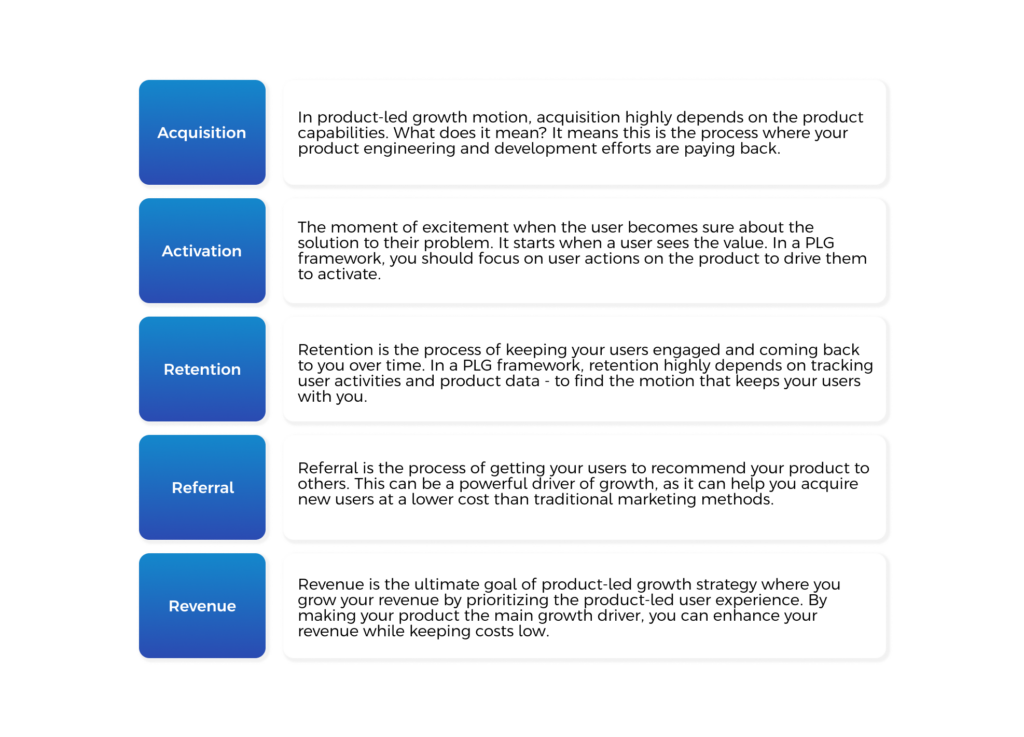
Trends in Product-led Growth
#1 Hyper-personalization
Companies will start using AI and Machine Learning to offer more personalized product experiences that will help them improve user activation, retention, and revenue. The more personalized the experience is, the higher likelihood to delight the users.
#2 Stronger focus on retention
Unpredictable market situations will force companies to better focus on retaining and expanding existing customers. This will result in higher demand for Customer Success people (whose job is also to sell). We will probably see more personalized support delivering an exceptional experience.
#3 Increased focus on onboarding and un-gated product experiences
Companies are becoming aware that onboarding doesn’t start when people sign up for a product, but the moment they interact with the brand. With more and more free trial/freemium products out there, it’s harder to differentiate, and allowing people to try your product before they buy it is slowly becoming the norm rather than a differentiator. We will have to let our product do the talking asap and use every chance to put it in front of the people and let them experience it, long before they even signup.
Latest Resources from UserMotion Team
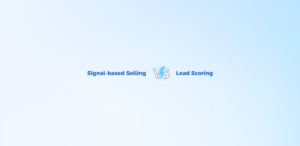
Is Signal-Based Selling Just Renamed Lead-Scoring?
In sales and marketing, the terms “signal-based selling” and “lead-scoring” often come up. But are they really different?
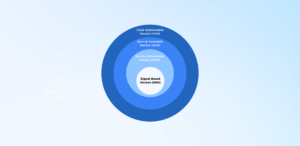
Signal Based Selling Strategy: SBM, Intent, Pipeline and Tech
Signal based selling strategy consist of signal based market, intent signals, pipeline plays and a relevant tech stack.
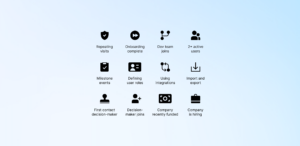
15 B2B Intent Data to x2 Sales (Examples and Tips)
15 first and third party b2b intent data examples that help you qualify your leads and prioritize high-potential accounts.
Frequently Asked Questions
What is a product-led growth strategy?
Product-led growth strategy is a GTM motion that especially SaaS businesses use for building each sales, marketing, customer success and product strategies based on the powers of product capabilities and product metrics.
What are the three pillars of product-led growth?
The three pillars product-led growth is product development, user experience and go-to-market.
What is PLG playbook?
PLG playbook is a comprehensive guide which SaaS businesses can use to understand, improve and implement product-led growth mindset.

